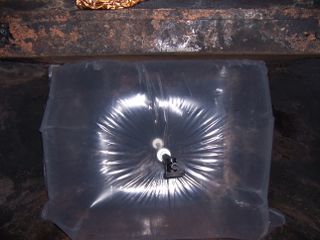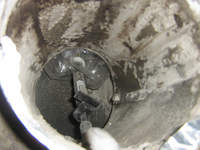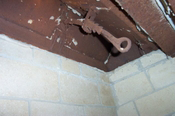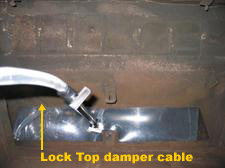
by blogediter | Mar 1, 2019 | Chimney Plugs
Chimney Balloons
The Chimney Balloon has become quite a topic of conversation for green energy and green tech bloggers.
The Chimney Balloon is referred to in so many ways. People call it: “an inflatable baffle, chimney seal, flue baffle, inflatable damper, chimney plug, chimney draft stopper, even a draft dodger!
Here is a link to an article that was written by a very well respected green blogger on the Plant Green website, his name is Josh Peterson:
“…That is where a Chimney Balloon comes in. A Chimney Balloon or Chimney Pillow is a reusable, durable plastic balloon that fits in the chimney under the flue and blocks out the cold air. Inflate the balloon and wedge it up near the flue. A Chimney Balloon can save you about $200-$500 dollars a year in heating costs.
Don’t forget to remove the Chimney Balloon before you start a fire. You should put a note on the fireplace door to remind you that the Chimney Balloon is up there. If exposed to heat, the Chimney Balloon will deflate. I assume it just falls into the fire at that point. It’s like a Chimney Balloon Icarus…” Click here to read the whole article

by blogediter | Feb 27, 2019 | Chimney Plugs
Chimney Balloon product
Chimney Balloon USA provided a 9×9 Chimney Balloon to the editors of the popular Green Technology Website TomsGuide.com. We wanted their honest opinion on the Chimney Balloon product. They installed the Chimney Balloon, took some pictures, and like it! Here is a brief quote from their review:
“…With the Chimney Balloon in place, there was an immediate stop to the air leaking into my basement from my wood stove chimney. I anticipate this will also keep odors from soot at bay (I have not experienced any since it has been in place). The Chimney Balloon can easily be deflated for removal, and should I happen to forget it’s there when starting a fire, the balloon will deflate and fall out to allow for proper evacuation of smoke and heat…” Click Here to read the rest of the article.
Displayed image and text quote is property of TomsGuide.com, ©2009 All Rights Reserved by Copyright holder.

by blogediter | Feb 25, 2019 | Chimney Plugs
Q: Jason, See below. There doesn’t seem to be enough room under my damper to use the Chimney Pillow/Balloon. There is plenty of drafts. – SZ
A: SZ, Thank you for the pictures. they are very descriptive. With this application, I would tend to recommend to put the Chimney Balloon above the damper. I see you have what appears to be sufficient room below the damper if you open it up to get the handle out of the way, but I think the best route would be to measure above the damper with a folding carpenters ruler. I have attached a diagram of your chimney if it does have a smoke chamber above the damper in the flue, If you install it high enough you may even be able to close the damper after the Chimney Balloon is installed. I am just taking a guess that this fireplace does have a smoke chamber, but even if it doesn’t I think the best install location is above the damper. See the diagram below. – Jason

by blogediter | Feb 16, 2019 | Chimney Plugs
Lock Top Damper Cable
Q: Jason, I have a 113-year-old house with 6 fireplaces … they were originally coal-burning units .. they all have the lymance lock top damper on the top of the chimney … will the Chimney Balloon work with that configuration? – GB
A: GB, WOW 6 fireplaces! that has to be some kind of record! It is very wise that you have a chimney top damper on these chimneys, however the chimney top damper still allows the warm air of your home to rise up into the chimney and cool in the chimney and sink back down. You may notice a slow cool release of air from your fireplaces. That cool air is likely not outside air, but just cooled inside air sinking back down again. We have had customers with chimney top dampers that have used the Chimney Balloon on the bottom of their chimney in addition to their top damper and it has made a difference. With 6 chimneys the difference would be significant.
Q: Jason, thanks for the response … one of my concerns is if the damper cable will interfere with the Chimney Balloon sealing property. And if I am using a Chimney Balloon and a lock top damper … could I just use a Chimney Balloon, and not bother with the lock top damper? – GB
A: GB, Recently a homeowner in Detroit asked me the same question you are asking when he ordered 3 Chimney Balloons for his home. He had Lock-top dampers just like you, on all three chimneys as well. After he installed the Chimney Balloon he reported that it sealed just fine despite the chain or cable. The Chimney Balloon simply presses the chain or cable against the flue wall if the cable is relaxed. Or if the cable or chain is tight, the Chimney Balloon will envelop and expand around the cable causing no noticeable leak or draft. To read more on how to deal with the tight cable read this article: http://www.chimneyballoonusa.com/blog/2007/11/my-lock-top-or-.html As for your second question… a Chimney Balloon can work just fine all by itself. – Jason
by blogediter | Feb 15, 2019 | Chimney Plugs
This posting was found on Google Groups and I thought it was an interesting and relevant post on this blog.
Q: My wood burning fireplace has a lot of missing mortar between the bricks right behind where the logs go. I went to Home Depot and they sell fireplace mortar in a tube (the kind you need to use a caulking gun). The area that needs the mortar has a lot of soot around it. Would I need to clean the soot off before applying this mortar stuff? If so, how do one clean year of soot? Thanks. -RR
A: RR, I don’t throw around the term “have a pro look at it” a lot but in this case, your description of “a lot of missing mortar” concerns me. If it is that way in the hearth it is bound to be that way in the chimney and you need to know if it is. Cracked or missing mortar is a serious problem and can easily lead to a house fire.
If that suggestion doesn’t appeal to your wallet but you still like the fireplace then you are just like me. My fireplace was in bad shape due to mortar issues, a bad crusty worn & damper, but I still liked the look of the fireplace. I didn’t want to bother with repairs so I bought a nice candelabra and a Chimney Balloon. I use the candelabra and light it up when I want some ambiance (just like I used the fireplace). Doing this actually saved money on my gas bill since the fireplace didn’t suck the heat out on my home when I was using it. The Chimney Balloon helped me seal up the damper nice and tight when I wasn’t using it at all which also prevented the den from feeling so cold in the winter. I know this is a different way to look at the issue with your fireplace, but the best I can offer is what worked for me. -GJ
by blogediter | Feb 8, 2019 | Chimney Plugs
Q: I accidentally ignited my gas fireplace under my Chimney Balloon (someone had removed the red reminder card from the gas spigot). It fell out of the chimney within 10 seconds. Can I patch the burn hole in my Chimney Balloon? At what temperature does the Chimney Balloon melt and burst? – JG
A: JG, Well your Chimney Balloon did exactly what it is supposed to do when a fire is lit under it, but unfortunately it is not repairable when melted. The hole is going to be just too big.
The answer to your second question is 180 – 220 degrees Fahrenheit it the average melting point of the Chimney Balloon if it is exposed to flame. Your gas fireplace came up to that temperature very rapidly, as gas fireplaces tend to do. Wood fireplaces tend to get to temperature a little slower, but it doesn’t take long for the Chimney Balloon to sacrifice its life for yours. – Jason



